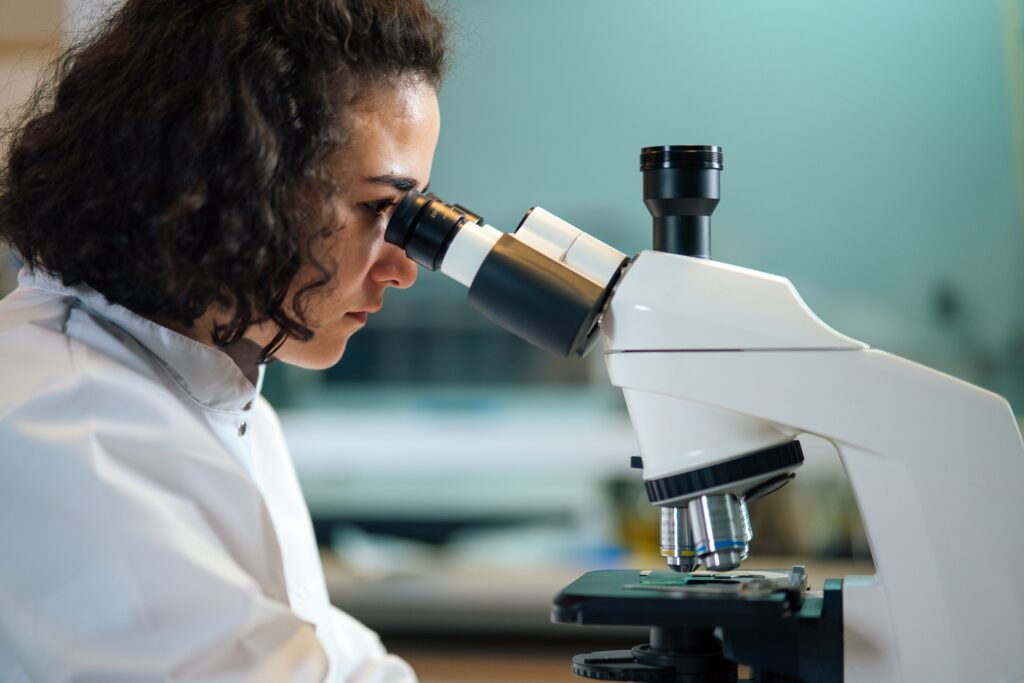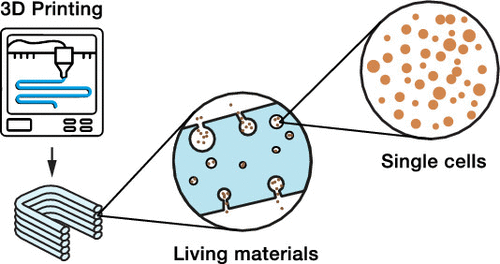
Writer: Anett Toom | University of Tartu
This is an extract from a research paper by an additive manufacturing specialist Hans Priks from ECOLABNET’s member the University of Tartu.

“Living materials are like hotels for micro-organisms, where different kinds of bacteria, yeasts and seaweed can live, reproduce, eat and produce us something useful. Polymeric structure is dense enough for the bacteria to move in and out. Thanks to 3D printing we can give the hotels the necessary structure and fill different sections with different species with different functions.”
– Hans Priks
Creating living materials
Three-dimensional (3D) printing of natural and synthetic materials for biomedical and biotechnology applications is a promising research field with applications that include screening tools and production platforms in a sustainable economy. Additive manufacturing allows 3D printing of polymeric materials together with cells, creating living materials for applications in biomedical research and biotechnology. However, an understanding of the cellular phenotype within living materials is lacking, which is a key limitation for their wider application.
Our ability to develop new polymeric materials and their hydrogels for 3D printing living materials is outpacing our understanding of living materials due to the lack of investigations into how the mutual interactions of incorporated cells in the living materials impact both the cells and the polymers. Understanding such cellular–polymeric interactions is crucial to draw conclusions about the effects of physical confinement on cells within these materials. Herein, we present an approach to characterize the cellular phenotype within living materials.
Characterizing the cellular phenotype within living materials
The microbe-laden hydrogels form living materials that are permissive for metabolic activity and can provide significant improvement with respect to robustness, reproducibility, and scale-up over traditional immobilization methods using natural biopolymers. The multiscale properties of hydrogels of such polymers allow their applications in diverse fields, such as drug delivery, tissue engineering, and biotechnology. In previous studies, the hydrogels maintained the viability and metabolic activity of yeast or bacteria to afford immobilized bioreactors with long-term metabolic activity.
Previously, optical microscopy and scanning electron microscopy have been used to investigate cell-gel morphology and hydrogels themselves but only to an illustrative extent. For this reason, we focused on these reliable and accessible microscopy tools and techniques for the characterization of living materials and for the investigation of cellular phenotypes in a physiological environment.
In all instances, we used the budding yeast Saccharomyces cerevisiae, which has been previously reported to be viable in these materials and assigned the generally recognized as safe status making it applicable in food and pharma industries. We immobilized the yeast in three different photo-cross-linkable triblock polymeric hydrogels. We also assessed the effects of different polymers on the cellular phenotype, which is important for a holistic understanding of living materials and the selection for particular applications.
Impact of physical confinement
Using optical and scanning electron microscopy, we showed that hydrogels based on these polymers were stable under physiological conditions, but yeast colonies showed differences in the interaction within the living materials. We found that the physical confinement, imparted by compositional and structural properties of the hydrogels, impacted the cellular phenotype by reducing the size of cells in living materials compared with suspension cells. These properties also contributed to the differences in immobilization patterns, growth of colonies and colony coatings. We observed that a composition-dependent degradation of polymers was likely possible by cells residing in the living materials.
In conclusion, our investigation highlights the need for a holistic understanding of the cellular response within hydrogels to facilitate the synthesis of application-specific polymers and the design of advanced living materials in the future.
